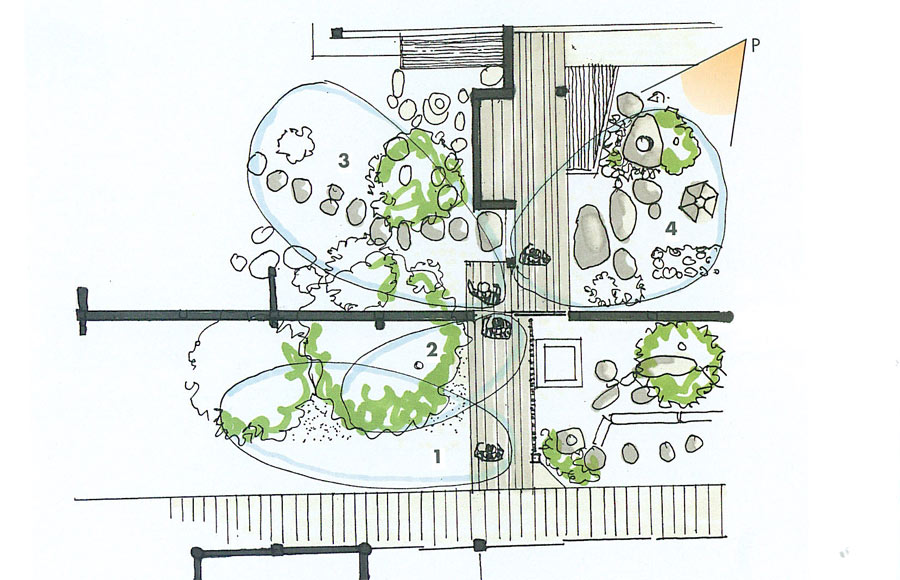SPACE
SAUZET
AND
CARBALLAR
ARCHITECTS
The Influence of Japan
Buddhism is a philosophy that teaches us how to exist in the present moment, by means of our everyday gestures. This aspect is even stronger in Zen Buddhism. Thus, temple architecture is in many cases similar to farm architecture, even though temples are sacred places.

Man, aided by his dwelling, strikes a partnership with nature.
This is the body that architecture will reach the mind. The provision, walls, floors, roof voids,shadow and light, open the visitor to receive a message written in space of the world, felt a symbol.
This symbol gives back to places where empty and full are linked together seamlessly, where the shadow in the smooth transition to the multiple shades, replaces light gushing gardens. Any home that offers absolute certainty of being here and now united in awhile called earth.

Interplay of gardens being discovered on the approach to the residence of the Shin-Juan monks.

There is no confrontation between man and the massive scale of a construction as we approach a Zen temple. This confrontation can be avoided by use of a device : the arrangment of shapes into a progressive sequence. The main building gets absorbed. As we approach the temple façade, the showdown between man and an « arrogant » building is avoided.

Chaining in out in a home in Provence.
By interposing secondary elements that punctuate the immediate surroundings - an imposing door, a wall that needs to be circumvented, a clump of trees ? the façade of this place of celebration is made to disappear. These accompanying elements are most of the time a succession of empty spaces that lead the faithful inside, so that, from the outside, the bulk or the smallness of the constructions cannot be perceived; so that discovering the mystery inherent to all things is all that matters.
Vernacular influence
Since the dawn of time, man has taken on the task of living, one day at a time, one minute at a time. In his relationship to the world, mountains, rivers, trees, animals, cold weather, rain, wind and fire become allies and enemies. The only way he can take on this relationship is through direct or conscious awareness of the world here below.
This tangible awareness gave rise to tools, houses, villages. These objects were created by man. His body moulded them, his soul mixed with them. They are called the vernacular arts.
By their strength, they provide the bedrock for a type of architecture and town planning that is far removed from all neo-creations. It is given full meaning through a creative web linking earth, place, man and nature together.
Natural architecture is close to this vernacular art, which is in touch with our bodies, our sensations, in tune with our muscles, inseparable from the nature of the world. This architecture tries to revive this regional core by reusing shapes that are deeply rooted in ancient times: a roof. Some materials are embedded in our memory : earthenware, stone and wood. We make extensive use of these.
The influence of philosophy
The thinking behind this architecture was found in the depths of the Zen Buddhist tradition. Similar trends converge in contemporary philosophy.
Being in the world, being interested in things for what they are, going into the depths of their being: such are the themes explored by this philosophy which ties in with « natural architecture » and its emphasis on physical actions.
Merleau-Ponty describes this permanent alertness as the « attitude of the explorer ». We as architects try to encourage people to adopt this attitude towards the house they live in. A school, a library, a hotel : none of these should be excluded. This is an architecture that awakens our senses and makes us present to our world.
Copyright © 2011-2024 - Developed by Gayar Ti' Tang